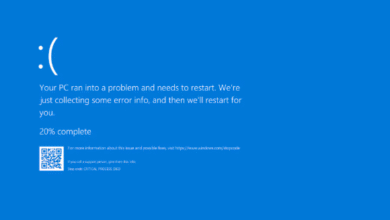The Ultimate Guide to Codex: Unlocking the Future of Software Development

Table of Contents:
- Introduction to Codex
- History and Evolution of Codex
- Features of Codex
- How to Use Codex
- ChatGPT Coden: Codex Integration in Action
- OpenAI Codex Free vs Paid: Which One Is Right for You?
- OpenAI Codex Pricing: Plans and Tiers
- Codex AI vs Other Development Tools
- Practical Use Cases of Codex
- TY Codex: Advanced Developer Tools for Power Users
- Azure OpenAI Codex: Enterprise Integration
- Limitations and Challenges of Codex
- The Future of Codex
- Frequently Asked Questions (FAQs)
- Conclusion
1. Introduction to Codex
In a groundbreaking announcement on May 16, 2025, OpenAI CEO Sam Altman introduced Codex, a software engineering agent designed to operate in the cloud and assist developers with tasks such as writing new features or fixing bugs. Altman wrote on X (formerly Twitter):
“Today we are introducing Codex. It is a software engineering agent that runs in the cloud and does tasks for you, like writing a new feature or fixing a bug. You can run many tasks in parallel.”
Codex represents a major leap in AI-assisted development, bridging the gap between natural language and code.
2. History and Evolution of Codex
Codex originated from OpenAI’s earlier language models like GPT-3 and GPT-4, evolving into a tool focused specifically on software engineering. From simple code generation tools to full-scale AI agents that manage repositories, run tests, and deploy updates, Codex has come a long way.
The evolution includes integration with IDEs, terminals, cloud environments, and more. This expansion transformed Codex from a helper to a hands-on engineering assistant.
3. Features of Codex
Codex comes packed with features, including:
- Code generation in multiple languages
- Bug detection and fixes
- Integration with Git and CI/CD tools
- File reading/editing
- Command execution (tests, builds, etc.)
- Collaborative multi-agent task handling
- Cloud-native operation
These features make it a game-changer for developers and teams aiming for efficiency and automation.
4. How to Use Codex
Using Codex is as simple as sending a command via a terminal or integrating it with your development environment. Here’s a step-by-step breakdown:
- Sign in to OpenAI or Azure OpenAI portal.
- Access Codex via terminal or web UI.
- Issue natural language instructions, like:
- “Write a REST API in Node.js.”
- “Fix the bug in the user authentication module.”
- “Run unit tests and generate a report.”
- Codex executes the task, returning files, outputs, and logs.
Codex can also interact with files, test harnesses, linters, and type checkers, providing end-to-end automation.
5. ChatGPT Coden: Codex Integration in Action
ChatGPT Coden is a premium extension that pairs Codex with ChatGPT, allowing for more intuitive conversations around code. Developers can ask questions, explain issues, and generate complex logic through simple dialogue. It supports inline code suggestions, debugging help, and task execution directly through chat.
Example interaction:
- User: “Why is this function returning null?”
- ChatGPT Coden: Analyzes the code and explains possible reasons while offering a fix.
6. OpenAI Codex Free vs Paid: Which One Is Right for You?
Codex comes with both free and paid tiers. The free version provides limited API credits and basic capabilities, while the paid version unlocks:
- Increased API limits
- Parallel task execution
- Access to advanced models
- Integration with enterprise tools
7. OpenAI Codex Pricing: Plans and Tiers
OpenAI offers several pricing plans for Codex:
- Starter (Free): Limited usage, suitable for beginners.
- Pro ($20/month): Higher limits, faster response times.
- Team ($100/month): Collaborative features, team dashboards.
- Enterprise (Custom Pricing): SLA-backed, Azure integration, admin controls.
Each tier includes increasing levels of access, with priority support and additional features.
8. Codex AI vs Other Development Tools
Compared to tools like GitHub Copilot, AWS CodeWhisperer, and TabNine, Codex AI stands out due to:
- Broader natural language understanding
- Multi-tasking capabilities
- Full command line and test harness support
- Enterprise-grade scalability
Codex acts more like a development partner than just an autocomplete tool.
9. Practical Use Cases of Codex
- Web development: Build full-stack applications via natural language.
- Data science: Automate data cleaning, modeling, and visualization.
- DevOps: Deploy environments and monitor systems.
- Testing: Create, run, and analyze test cases.
- Security: Detect vulnerabilities in real-time.
Codex also supports collaborative development, allowing multiple agents to work on large projects in parallel.
10. TY Codex: Advanced Developer Tools for Power Users
TY Codex refers to a set of developer-centric extensions built on top of Codex’s capabilities. These include:
- Script generators
- Real-time performance monitors
- Code review bots
- Continuous deployment configurations
TY Codex empowers expert users to fine-tune Codex operations and maximize productivity.
11. Azure OpenAI Codex: Enterprise Integration
Through Azure OpenAI, enterprises can deploy Codex within secure cloud environments. Benefits include:
- Regional data control
- Integration with Microsoft tools
- Enterprise identity and access management
- Scalable containerized agents
Azure OpenAI Codex is ideal for businesses requiring compliance and robust infrastructure.
12. Limitations and Challenges of Codex
Despite its power, Codex has limitations:
- Not perfect with obscure codebases
- Requires clear instructions
- Limited offline support
- High-tier plans needed for heavy users
It’s crucial to treat Codex as a co-pilot, not a replacement for human developers.
13. The Future of Codex
OpenAI aims to evolve Codex into a fully autonomous software engineer. Upcoming features may include:
- Self-learning on private codebases
- UI/UX design automation
- Greater model personalization
- Cross-project code reuse
The future holds massive potential for Codex to become a cornerstone of AI-driven software development.
14. Frequently Asked Questions (FAQs)
Q: Is OpenAI Codex free to use? A: Yes, there’s a free tier, but it’s limited in functionality.
Q: Can Codex be used with ChatGPT? A: Yes, through the ChatGPT Coden integration.
Q: What programming languages does Codex support? A: Over a dozen, including Python, JavaScript, Go, Java, and more.
Q: Is Azure OpenAI Codex available globally? A: Yes, via Microsoft’s global cloud infrastructure.
Q: What’s the difference between Codex AI and GitHub Copilot? A: Codex provides deeper system-level integration and task execution.
15. Conclusion
Codex is redefining how we think about software engineering. With robust capabilities, seamless integrations, and ongoing innovation, it’s poised to become the AI development partner of choice. Whether you’re a solo developer, a startup, or an enterprise, Codex offers tools and intelligence to accelerate your development journey.





